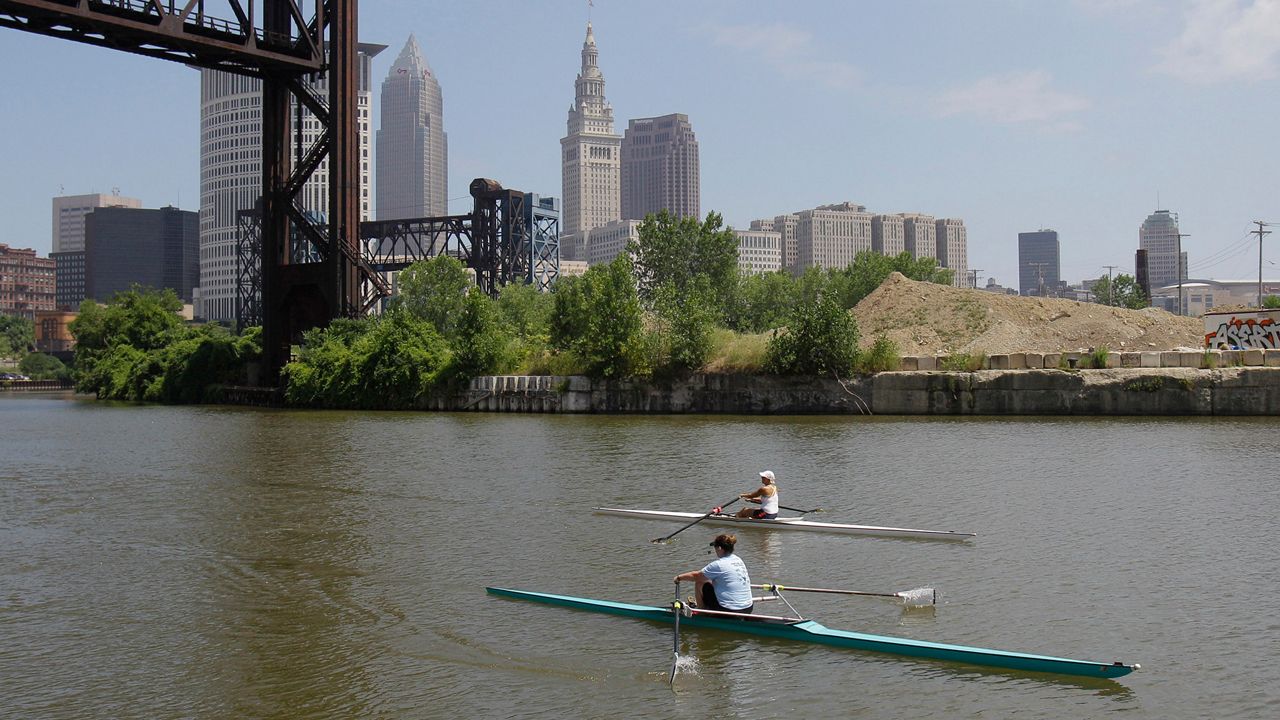OHIO — Gov. Mike DeWine announced the expansion of the state's H2Ohio program to focus on improving and maintaining the health of the state's large rivers.
"We know that river health in Ohio has improved tremendously in the last several decades, but there is still more work to do," said DeWine. "Water is one of Ohio's greatest assets, and my administration is dedicated to protecting this invaluable resource."
Since its creation in 2019, the program has put a focus on water infrastructure replacement, statewide wetland creation and reduction of algal-bloom agricultural runoff.
In order to aid in the health of Ohio's rivers, DeWine said allocated funds of approximately $270 million from the Ohio General Assembly to assist with the expansion.
The expansion will include a per- and polyfluoroalkyl (PFAS) substances survey, a mussels study, dam removal and land conservation.
PFAS — more commonly known as "forever chemicals" — are "manmade compounds used in the production of numerous consumer and industrial products, which have been linked to serious health issues including kidney and testicular cancer, thyroid disease, low birth weight and high cholesterol," DeWine said in a press release.
DeWine said Ohio will be the first state to undergo a survey to measure its large rivers for PFAs. The Ohio EPA will collect water samples and aquatic life tissue specimens of 29 rivers, and the baseline measurement findings will be used to form a plan to get rid of any contamination.
"Testing for PFAS in Ohio's rivers is just the latest of several steps that the DeWine-Husted Administration has taken to protect Ohioans from the largely unknown risks associated with PFAS exposure," said Anne Vogel, director of the Ohio EPA.
Sampling is expected to being in the fall of 2024.
DeWine said freshwater mussels are an important indicator of water quality, as they are sensitive to pollutants. The survey of Ohio's ecological system is expected to being in the spring of 2024, and the results will be used to improve and maintain the health of the river ecosystems.
The H2Ohio Rivers program will take a close look at dams across the state to see if they are depleting oxygen and harming water quality, affecting fish migration and trapping sediment. The results will determine whether officials should remove or modify dams.
DeWine said the first dam projects to receive funding are in Miami County, which includes removing the Great Miami River dams in both Troy and Piqua, as well as the modification of Piqua's sheet pile dam. This will improve the passageways for fish, allow room for recreational activities and improve habitat restoration.
"We are excited to expand our water quality efforts into Ohio rivers, increasing accessibility to clean water for communities across the state,” said ODNR Director Mary Mertz. “The initiative we’re taking through the H2Ohio Rivers program will indicate which rivers need the most help and which rivers are healthy in order to help us plan how to approach both scenarios.”
The H2Ohio Rivers program aims to preserve and protect forests along the rivers, which helps prevent the degrading of water quality. Those forests, also called "riparian buffers," help provide a habitat to wildlife.
To achieve this, the H2Ohio Rivers program in partnership with ODNR and the Ohio Department of Agriculture, will also team up with the U.S. Department of Agriculture to create a Conversation Reserve Enhancement Program (CREP) for the Great Miami River watershed and State Scenic Little Miami River watershed. The program incentivizes farmers to voluntarily set aside land that could potentially create nutrient and sediment runoff.
A CREP is already being used for the Lake Erie and Scioto watersheds, according to DeWine
"Farmers are the original conservationists,” said ODA Director Brian Baldridge. “With the expansion of Ohio’s CREP, producers who have land that may not be productive in row-crop agriculture will now be eligible for conservation practices that will improve water quality in the Miami River watershed and beyond.”



